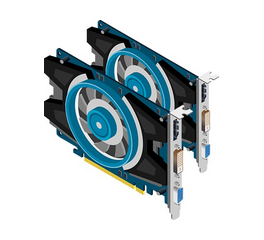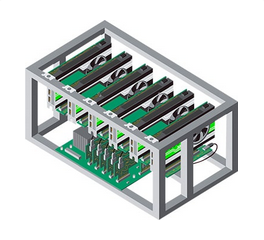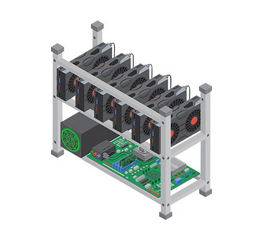Description
Bitcoin ROI
Bitcoin ROI. Ti-Miner for Bitcoin Mining. Bitcoin mining is a critical component of the Bitcoin ecosystem, serving as the process through which new bitcoins are introduced into circulation and transactions are verified. At its core, Bitcoin mining involves solving complex mathematical problems, which requires substantial computational power. The process of mining is integral to maintaining the security and integrity of the Bitcoin network.
The cornerstone of Bitcoin mining is the blockchain, a decentralized ledger that records all transactions across the network. Each transaction is grouped into a block, which is then added to the chain of previous blocks, hence the term “blockchain.” Miners play a pivotal role in this system by validating transactions and ensuring their accuracy before they are added to the blockchain. This validation process is achieved through cryptographic hashing algorithms that require immense computational effort, making it virtually impossible to alter transaction records once they are confirmed. Ti-Miner for Bitcoin Mining
To incentivize miners for their efforts, they are rewarded with newly created bitcoins and transaction fees from the transactions they validate. However, the mining process is highly competitive, as miners around the world vie to solve the cryptographic puzzles first. This competition necessitates the use of specialized hardware, such as GPUs (Graphics Processing Units), which are more efficient at handling the required for mining compared to traditional CPUs (Central Processing Units).
The Nvidia GTX 1060 GPU, for instance, is a popular choice among miners due to its balance of performance and cost-effectiveness. Equipped with the necessary computational power, this GPU can significantly enhance a miner’s ability to solve cryptographic puzzles and secure the Bitcoin network. As the difficulty of mining increases over time, driven by the algorithm’s self-adjusting nature, the demand for powerful and efficient mining hardware becomes even more crucial.
By contributing their computational power, miners not only earn rewards but also help to keep the Bitcoin network decentralized and secure. This symbiotic relationship between miners and the Bitcoin ecosystem underscores the importance of understanding the mechanics and requirements of the mining process, particularly for those considering investing in Bitcoin mining hardware like the Nvidia GTX 1060.
Understanding the Ti-Miner (Low) GPU 4 Nvidia GTX 1060. Ti-Miner for Bitcoin Mining
The Ti-Miner (Low) GPU 4 Nvidia GTX 1060 stands out as a compelling option for Bitcoin mining, merging robust technical specifications with cost-effective performance. Central to its appeal is the Pascal architecture, which underpins the GTX 1060. This architecture enhances the GPU’s efficiency and processing power, ensuring it can handle the demanding computations required for Bitcoin mining.
One of the key attributes of the GTX 1060 is its 1280 CUDA cores, which contribute significantly to its processing prowess. This allows the GPU to execute multiple parallel calculations, an essential feature for mining operations. With a base clock speed of 1506 MHz and a boost clock speed of 1708 MHz, the GTX 1060 offers substantial computational capability, making it a viable choice for miners aiming to balance performance and cost.
Energy efficiency is another critical factor in the GTX 1060’s favor. The card operates with a thermal design power (TDP) of 120 watts, which is relatively low compared to other mining GPUs. This efficiency translates to lower operational costs, an important consideration for miners seeking to maximize their profit margins. When compared to higher-end GPUs, the GTX 1060 offers a reasonable compromise between power consumption and hashing power, making it a sensible choice for those starting in Bitcoin mining or operating on a budget.
In the realm of Bitcoin mining, the GTX 1060’s performance stands out when juxtaposed with other GPUs. While it may not match the raw power of top-tier models like the GTX 1080 or the RTX series, it provides a balanced approach that is both affordable and effective. This balance makes the Ti-Miner (Low) GPU 4 Nvidia GTX 1060 an attractive option for miners looking to optimize their resources without sacrificing too much in terms of performance.
Ti-Miner for Bitcoin Mining
Ultimately, the Ti-Miner (Low) GPU 4 Nvidia GTX 1060 offers a blend of efficiency, processing power, and cost-effectiveness. Its Pascal architecture, combined with a manageable power consumption, positions it as a reliable and practical choice for Bitcoin mining enthusiasts and professionals alike.
Setting Up the Ti-Miner for Bitcoin Mining Ti-Miner for Bitcoin Mining
Setting up the Ti-Miner (Low) GPU 4 Nvidia GTX 1060 for Bitcoin mining involves several crucial steps to ensure optimal performance and efficiency. This guide will walk you through the entire setup process, from hardware assembly to software installation and configuration.
First, begin by assembling your mining rig. Ensure that your system has a compatible motherboard with sufficient PCIe slots for the Nvidia GTX 1060 GPUs. Secure the GPUs onto the motherboard and connect them using PCIe riser cables. Next, attach the power supply unit (PSU) to the motherboard and GPUs, making sure each component is adequately powered.
Once the hardware is set up, the next step is to install the required software. Start by installing a reliable operating system; many miners prefer using a Linux-based OS or a specialized mining OS like HiveOS or SimpleMining. After the OS is installed, download the latest Nvidia drivers to ensure your GPUs perform at their best.
With the drivers installed, it’s time to set up your mining software. Popular options include CGMiner, BFGMiner, and NiceHash. Download and install your chosen mining software, and then configure it to work with your Nvidia GTX 1060 GPUs. You will need to join a mining pool to maximize your mining efficiency. Popular mining pools include Slush Pool, F2Pool, and AntPool. Sign up for an account with your chosen pool, and obtain the necessary configuration details, such as the pool’s URL and your worker credentials.
Configure the mining software with these details, ensuring that it points to the correct mining pool and uses your credentials. Additionally, optimize your mining settings by adjusting parameters such as core clock, memory clock, and power limit. Tools like MSI Afterburner can help you fine-tune these settings for the best performance without compromising the stability of your system. Bitcoin ROI
Lastly, monitor your mining rig’s performance regularly. Use software tools to keep track of your GPUs’ temperatures, hash rates, and power consumption. This will help you make necessary adjustments and ensure that your Ti-Miner (Low) GPU 4 Nvidia GTX 1060 setup remains efficient and profitable over time.
Performance and Efficiency of the GTX 1060 in Bitcoin Mining
The Nvidia GTX 1060 is a popular choice among budget-conscious Bitcoin miners due to its balance of performance and cost-efficiency. When evaluating its performance in Bitcoin mining, several key metrics come into play, including hash rates, power consumption, and overall profitability. The GTX 1060 typically achieves a hash rate of approximately 20-25 MH/s, making it a competent performer in the mid-range GPU market. This hash rate, while not on par with higher-end GPUs, offers a reasonable entry point for those looking to engage in Bitcoin mining without significant upfront investment.
Power consumption is a critical factor in the efficiency of any mining operation. The GTX 1060 has a power draw of around 120 watts, which is relatively moderate compared to more powerful GPUs. This lower power consumption directly translates to reduced operational costs, an essential consideration for long-term mining viability. The efficiency of the GTX 1060 can be further enhanced through overclocking. By adjusting the clock speeds and voltage settings, miners can potentially increase the hash rate by 10-15%, although this comes with increased power consumption and heat output. These adjustments require a careful balance to avoid diminishing returns. Bitcoin ROI
Profitability remains a core concern for miners. The GTX 1060, due to its moderate hash rate and power efficiency, can yield a steady return on investment, particularly when electricity costs are low. However, it’s important to acknowledge potential drawbacks. The rapid evolution of the mining hardware market means that even efficient GPUs like the GTX 1060 can quickly become outdated. Additionally, the increasing difficulty of mining Bitcoin necessitates regular hardware upgrades to maintain competitiveness.
In conclusion, the Nvidia GTX 1060 offers a viable option for those new to Bitcoin mining or operating on a tighter budget. Its balance of performance, power efficiency, and cost makes it a practical choice, though miners should remain aware of the evolving landscape and the need for periodic hardware updates to sustain profitability. Bitcoin ROI
Economic Aspects of Bitcoin Mining
When considering Bitcoin mining with the Nvidia GTX 1060 GPU, understanding the economic implications is crucial. The initial investment encompasses the cost of the GPU itself, which, while more affordable compared to higher-end models, still requires a significant outlay. Acquiring a GTX 1060 can range from $200 to $300, depending on the market demand and availability. Additionally, other hardware components such as a compatible motherboard, power supply unit, and cooling systems must be factored into the total setup cost.
Ongoing operational expenses are another critical element. The primary ongoing cost is electricity, which can vary significantly depending on your location. The GTX 1060 has a relatively modest power consumption of approximately 120 watts. However, when running 24/7, the electricity costs can accumulate. For instance, at an average electricity rate of $0.12 per kWh, the monthly electricity cost for running a single GTX 1060 would be around $10.80. This cost needs to be multiplied by the number of GPUs used and any additional cooling requirements.
Potential returns on investment are influenced by several factors, including market volatility and mining difficulty. The price of Bitcoin is notoriously volatile, which means that the value of mined coins can fluctuate dramatically. Mining difficulty, which adjusts approximately every two weeks, affects how hard it is to mine Bitcoin. As more miners join the network, the difficulty increases, making it harder to achieve the same returns over time. Bitcoin ROI
Profitability is a moving target influenced by the aforementioned variables. Tools like mining profitability calculators can provide estimates based on current market conditions, but these should be used with caution as they are prone to rapid changes. Furthermore, it’s important to consider the long-term wear and tear on the hardware, as continuous mining can shorten the lifespan of the GPU, necessitating replacements and additional investment. Bitcoin ROI
In conclusion, while the Nvidia GTX 1060 can be a feasible entry point for Bitcoin mining, prospective miners must carefully evaluate the economic aspects to ensure a viable and profitable venture. Bitcoin ROI
Risks and Challenges in Bitcoin Mining
Bitcoin mining, while potentially lucrative, is fraught with several risks and challenges that prospective miners must navigate. One significant risk is hardware obsolescence. The rapid evolution of mining technology means that today’s state-of-the-art hardware, including the Ti-Miner (Low) GPU 4 Nvidia GTX 1060, may become outdated quickly. As more efficient and powerful mining equipment becomes available, older models may struggle to keep up, resulting in diminished mining rewards and potentially rendering the investment in such hardware unprofitable.
Regulatory uncertainties also pose a substantial challenge to Bitcoin mining. Governments around the world have varying stances on cryptocurrency, and regulatory environments can change quickly. This unpredictability can result in legal complications, fines, or outright bans on mining activities. Consequently, miners must stay informed about local and international regulations and be prepared to adapt their operations accordingly.
Another critical issue is the increase in network difficulty. As more miners join the Bitcoin network, the difficulty of solving cryptographic puzzles increases, requiring more computational power and, consequently, more electricity. This escalating difficulty can reduce the profitability of mining operations, particularly for those using older or less efficient hardware. Bitcoin ROI
Environmental impact is a growing concern within the Bitcoin mining community. The substantial energy consumption required for mining operations contributes to a significant carbon footprint. As awareness of climate change rises, there is increasing pressure on miners to adopt more sustainable practices. This includes using renewable energy sources and improving the energy efficiency of mining operations to mitigate environmental damage. Bitcoin ROI
To address these challenges, miners can implement various strategies. Diversifying investments in mining hardware can help mitigate the risk of obsolescence. Staying abreast of regulatory changes and engaging with policymakers can reduce legal risks. Utilizing more efficient mining equipment and renewable energy sources can help manage costs and reduce environmental impact. By adopting these practices, miners can build more resilient and sustainable operations, ensuring long-term viability in the ever-evolving landscape of Bitcoin mining.
Alternative Uses for the Nvidia GTX 1060
The Nvidia GTX 1060, known predominantly for its role in Bitcoin mining, offers a broad range of applications beyond cryptocurrency. Its robust architecture and impressive performance metrics make it a versatile tool in various domains, including other types of cryptocurrency mining, gaming, and professional applications such as video editing and 3D rendering.
While Bitcoin mining often garners the most attention, the GTX 1060’s capabilities extend to mining alternate cryptocurrencies like Ethereum, Zcash, and Monero. Its efficient power consumption and processing power make it an excellent choice for miners seeking to diversify their portfolios and maximize their returns. By balancing the mining of different cryptocurrencies, users can mitigate risks associated with market volatility.
In the gaming industry, the Nvidia GTX 1060 shines as a reliable mid-range graphics card. It provides smooth gameplay and high frame rates for popular titles, ensuring an immersive gaming experience. With support for modern APIs such as DirectX 12 and Vulkan, the GTX 1060 can handle graphically intensive games, maintaining competitive performance levels. This makes it a go-to option for gamers who seek a balance between cost and performance.
Beyond entertainment, the GTX 1060 proves its worth in professional applications. Video editors and 3D artists can leverage its CUDA cores and VRAM to accelerate rendering tasks, reducing project turnaround times significantly. Software suites like Adobe Premiere Pro and Blender utilize the GPU’s power to enhance workflow efficiency, enabling professionals to achieve higher productivity and output quality. The card’s compatibility with various creative software further adds to its appeal as a multi-purpose investment.
In conclusion, the Nvidia GTX 1060’s versatility extends far beyond Bitcoin mining. Its applicability in diverse fields such as alternative cryptocurrency mining, gaming, and professional content creation underscores its value as a multifaceted asset. This adaptability not only enhances its utility but also solidifies its position as a worthwhile investment for both tech enthusiasts and professionals alike.
Conclusion and Future Prospects Bitcoin ROI
In this comprehensive guide, we have explored the various aspects of utilizing the Ti-Miner (Low) GPU 4 Nvidia GTX 1060 for Bitcoin mining. The GTX 1060, known for its balance of performance and efficiency, presents a viable option for those entering the cryptocurrency mining space on a budget. Its strengths lie in its cost-effectiveness, moderate power consumption, and reasonable hash rate, making it a popular choice among entry-level miners.
However, the GTX 1060 also has its limitations. As Bitcoin mining becomes increasingly competitive, the relatively lower hash rate of the GTX 1060 compared to more advanced GPUs may limit its long-term profitability. Additionally, the increasing difficulty of mining algorithms and the constant need for hardware upgrades pose significant challenges. This necessitates careful consideration of the potential return on investment versus the ongoing operational costs.
Looking ahead, the future of cryptocurrency mining is likely to be influenced by several key trends. The adoption of more efficient and powerful GPUs, the development of specialized mining hardware like ASICs, and advancements in blockchain technology are expected to shape the landscape. Additionally, the growing emphasis on sustainable and eco-friendly mining practices may drive innovation in energy-efficient hardware solutions.
For readers considering entering the Bitcoin mining space or upgrading their existing setups, it is crucial to stay informed about these evolving trends. Investing in more advanced and efficient GPUs, keeping abreast of technological advancements, and exploring energy-efficient mining practices can help optimize profitability. Furthermore, diversifying mining operations to include other cryptocurrencies may provide additional revenue streams and mitigate risks associated with Bitcoin’s market volatility.
In conclusion, while the Ti-Miner (Low) GPU 4 Nvidia GTX 1060 remains a practical choice for beginners, staying adaptable and informed is key to navigating the dynamic world of cryptocurrency mining successfully.




Reviews
There are no reviews yet.